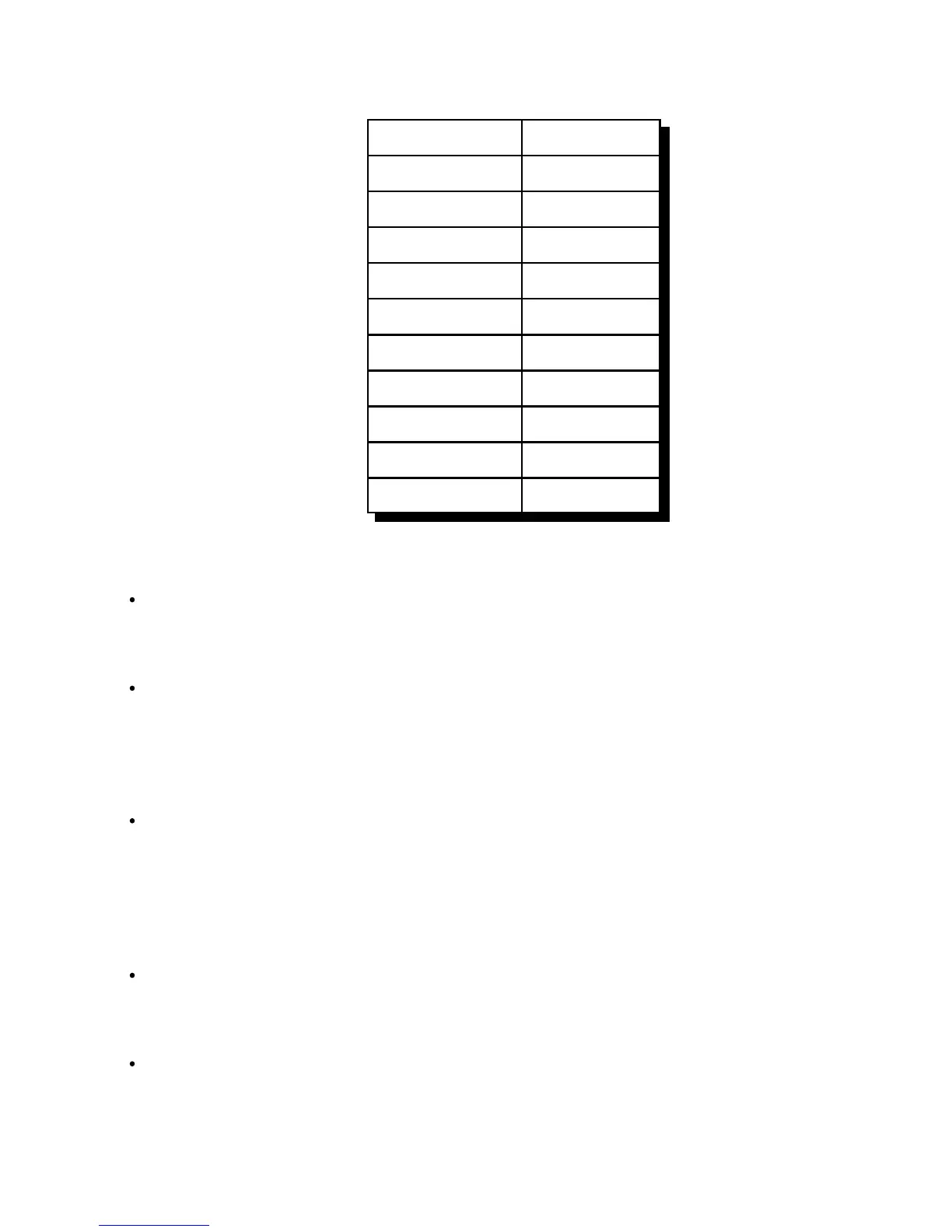15-13
Version 1.73 Copyright © 1997 Link Communications Inc. 1/18/97
Offset Code Offset size
0 0
1 100 Khz
2 500 Khz
3 600 Khz
4 1 Mhz
5 1.6 Mhz
6 1.7 Mhz
7 5 Mhz
8 12 Mhz
9 20 Mhz
Digit 9:
"p 9": Bump up 500 Hz. If you are in transceive mode, you may get an error if the new
frequency would be disallowed by the transmit edges. Voice response is "Up 500".
Digit 0:
"p 0": Selects virtual VFO B. Has no effect if you are already using virtual VFO B.
Restores the receive frequency, transmit frequency offset and mode to whatever they
were when you last used virtual VFO B. VFO B is called a "virtual VFO" because the
controller keeps track of it separately from virtual VFO A so it will work as you would
expect, but both will usually use VFO A on the radio. In other words, if you look at the
radio, it will probably show VFO A even when you select virtual VFO B.
"p 0 x" or "p 0 xx": Writes the contents of the current virtual VFO into virtual memory
"xx". This includes the receive frequency, transmit frequency offset and mode. Since
the memories are virtual, that is they are stored in the controller's memory rather than in
the radio, all 100 memories will work regardless of whether your HF radio has built-in
memories or not. Voice response is "Write xx".
Digit A:
"p A": Bump up 20 Hz. If you are in transceive mode, you may get an error if the new
before the 100 Khz digit. Voice response is "Up 20".
Digit B:
"p B": Bump down 20 Hz. If you are in transceive mode, you may get an error if the
new before the 100 Khz digit. Voice response is "Down 20".
